| Energy
storage mechanisms, potential energy, elastic energy storage, and energy transfers
in catapults, archery, and fleas - FT Exploring |
| |

|
 |
How
fleas, catapults, and archers convert stored energy to kinetic energy.
|
 |
 |
|
 |
 |
 |
 |
|
|

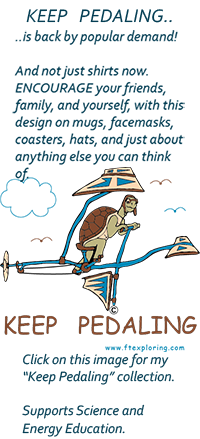
|
|
If this page is helpful, please share it:
|

|
 |
 |
 |
 |
 |
 |
|
|
| |
The
Flea, the Catapult, and the Bow
Wherin we see that human inventions do oft seem to copy nature
(Energy storage and energy changes in Fleas, Catapults, and Bows)
If Robin
Hood had been Written by an Engineer....
And
Robin didst slowly and with great determination put potential energy equal to
the work of his muscles into an elastic storage device, much as the lowly and
pesky flea hath been known to store it's slow muscle calories into a compressed
pad of most springy and efficient material inside the leg of this very same flea.
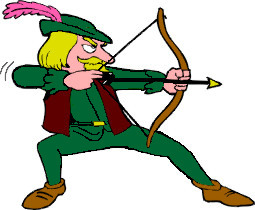
And therewith Robin the Bold and Valiant didst convert this stored energy most
quickly, efficiently, and accurately into the velocity of a sturdy and pointed
dart (oft called arrow) such that almost all of its former potential energy didst
become kinetic. Then this speedy dart didst split an arrow (oft called dart) already
buried in most distant target, having been previously hurled there at an equally
great speed by a similar conversion of stored energy.
This having been done much in the same manner as dost the flea convert stored
muscle energy into the velocity of its own body, being hurled then into the air
to a height many times greater than its own length (though this is not so impressive
a feat as many wouldst have us believe).
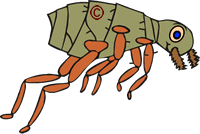
Both these feats having been impossible by mere mortal strength alone. Yea, it
is manifestly plain that conversion of stored muscle energy by an elastic storage
device hath made these miracles described herein possible.
Then didst bold Sir Robin kiss Maid Marion, she being most impressed, unto the
point almost of swooning, by a man that understandeth in such thorough, noble,
and practical fashion, the workings of energy conversion devices. (Happy
Ending)
|
|

Selected by the SciLinks
program, a service of National Science Teachers Association. Copyright 2001
Index
|
|
| |
|
|
| |
|
|
| |
|
|
| |
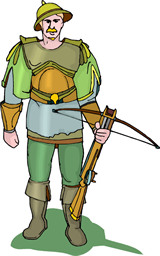 |
Okay, that's not really how it happened.
Too bad, we think. But it makes for a good introduction to our subject.
Aren't you curious? Don't you wonder what the heck we're talking about?
We're talking about how the jumping technique of fleas uses the same basic "technology"
as that used by an archery bow, cross bows, and ancient catapults (and lots of
other things).
Both the jumping fleas and the weapons of war use this technology to overcome
the same basic problem - the limitations of muscle power.
|
 |
 |
|
|
|
| |
Please recommend me, if this page is helpful:
|
|
 |
 |
 |
 |
 |
|
|
| |
| Without
Resilin fleas couldn't jump worth a hoot. They would have to try to get
on dogs by standing on their hind legs and hitchhiking. Probably wouldn't work
too well. Volunteer hosting? |
What do we mean muscles move too slow? Randy Johnson can throw a baseball a hundred
miles an hour. Fleas can jump several times a second. And didn't you see Maurice
Greene and Marion Jones in the Olympics? Their legs were moving pretty fast!
Well it is, as they say, all relative.
It only takes the flea about 50 milliseconds (or
about one twentieth of a second) to cock its leg in preparation for a jump. That
must mean he could jump at least that fast.
Well it ain't fast enough. To achieve the lofty
heights a flea reaches requires the little buggers to take off in about 0.7 milliseconds
(7 ten thousandths of a second!), or about 70 times faster than 50 milliseconds.
If the Greeks and Romans had several thousand Randy Johnsons
throwing rocks and spears for them, they might not have been in such a hurry to
develop catapults. Not many people can even come close to throwing as hard as
Randy Johnson, but a simple hand held shield could stop one of his fastballs pretty
easily. The same could not be said of stones hurled by catapults. |
The
shorter an animal's legs are, the faster it has to accelerate (or speed up) to
jump the same height. Some fleas have to accelerate to over 140 gravity forces,
or 50 times the acceleration rate of the space shuttle, in order to jump just
a few inches into the air. This sounds impressive but actually the stresses
in such a small animal are not particularly high, and it is the stresses that
matter. If a flea grew to human size it would probably not be able to accelerate
as fast as us.
|
|
Problem 1 - Little Animals can't Jump
Two things make it hard for
small critters to jump very high.
 The first problem is
air resistance. Air resistance slows small things a lot more than big
things. For an animal the size of a flea, air resistance is a huge problem. Nothing
can be done about this except, of course, go somewhere where there is no air,
like on the moon. The flea could jump significantly higher in a vacuum (except
that he'd be dead). The first problem is
air resistance. Air resistance slows small things a lot more than big
things. For an animal the size of a flea, air resistance is a huge problem. Nothing
can be done about this except, of course, go somewhere where there is no air,
like on the moon. The flea could jump significantly higher in a vacuum (except
that he'd be dead).
The second problem is that muscle moves too slow.
How high an animal jumps depends on how fast it is traveling when it leaves the
ground (and of course, on how much air resistance slows it down afterward). The
flea's short legs only allow it an acceleration
distance of a fraction of a millimeter. In order to reach an acceptable take-off
velocity (speed) the flea has to accelerate (speed up) very quickly. There are
real physical limits on how fast muscles can move and how much power they can
generate. There is no way the flea's muscles (or any animal's) muscles, can achieve
the necessary speed. They just can't generate that kind of power.
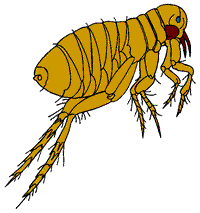 But we all know that fleas can jump pretty well. This means they are speeding
up (accelerating) during the jump much faster than should be possible if they
were using their muscles during the jump.
But we all know that fleas can jump pretty well. This means they are speeding
up (accelerating) during the jump much faster than should be possible if they
were using their muscles during the jump.
Solution
to Problem
So how do they do it? How do they jump higher than it's possible for muscles to
jump. Is it magic?
Nah. They just cheat a little. They use their muscles, not to jump, but to slowly
store energy in an efficient springy material called resilin. Then, when they
are ready to let loose, they release the energy quickly in a burst of power that
literaly springs them into the air like a...well...like a spring. It's
pretty much just like a catapult.
Learn more about the Jumping Technique of the Flea.
|
|
|
| |
|
|
Problem 2 - Humans Can't Throw Rocks and Pointed Sticks as Fast or as Far as they
would like to.
It's those slow
muscles again. Human muscles are about as slow as insect muscles (fleas
are insects).
 Just
as with jumping, how far an arrow or rock or spear travels, or how deeply it sinks
into it's target, depends first on how fast it is going when it leaves the throwing
device. That's why javelin throwers get running pretty fast before they throw
(their arm and body are the throwing devices). Just as with the jumping flea,
it must be accelerated very quickly in a short distance. We just can't generate
the power needed to get our arms moving fast enough. Just
as with jumping, how far an arrow or rock or spear travels, or how deeply it sinks
into it's target, depends first on how fast it is going when it leaves the throwing
device. That's why javelin throwers get running pretty fast before they throw
(their arm and body are the throwing devices). Just as with the jumping flea,
it must be accelerated very quickly in a short distance. We just can't generate
the power needed to get our arms moving fast enough.
And of course, when people started to want to throw really big rocks and darts
at each other, then they had the problem of their muscles being not only too slow,
but also too weak.
Solution to Problem
So what did we do? We improvised, like the flea, and used a springy material that
could store slow but steady muscle energy and then release it much faster. We
invented archery, then catapults and crossbows.
|
|
|
| |
|
|
|
|
| |
|
|
|
|
 |
 |
 |
 |
 |
|
|


|
|
If this page was helpful to you, please recommend it:
|
|
|
|
©Copyright 2013. David
Watson. All rights reserved. Almost everything in the Flying Turtle web site is
copyrighted, including all graphics, pictures, text, html code, sound, and layout.
For information concerning use of this material, click on the word Copyright
page. |
|
|
|
| |
|
|
 |
 |
 |







